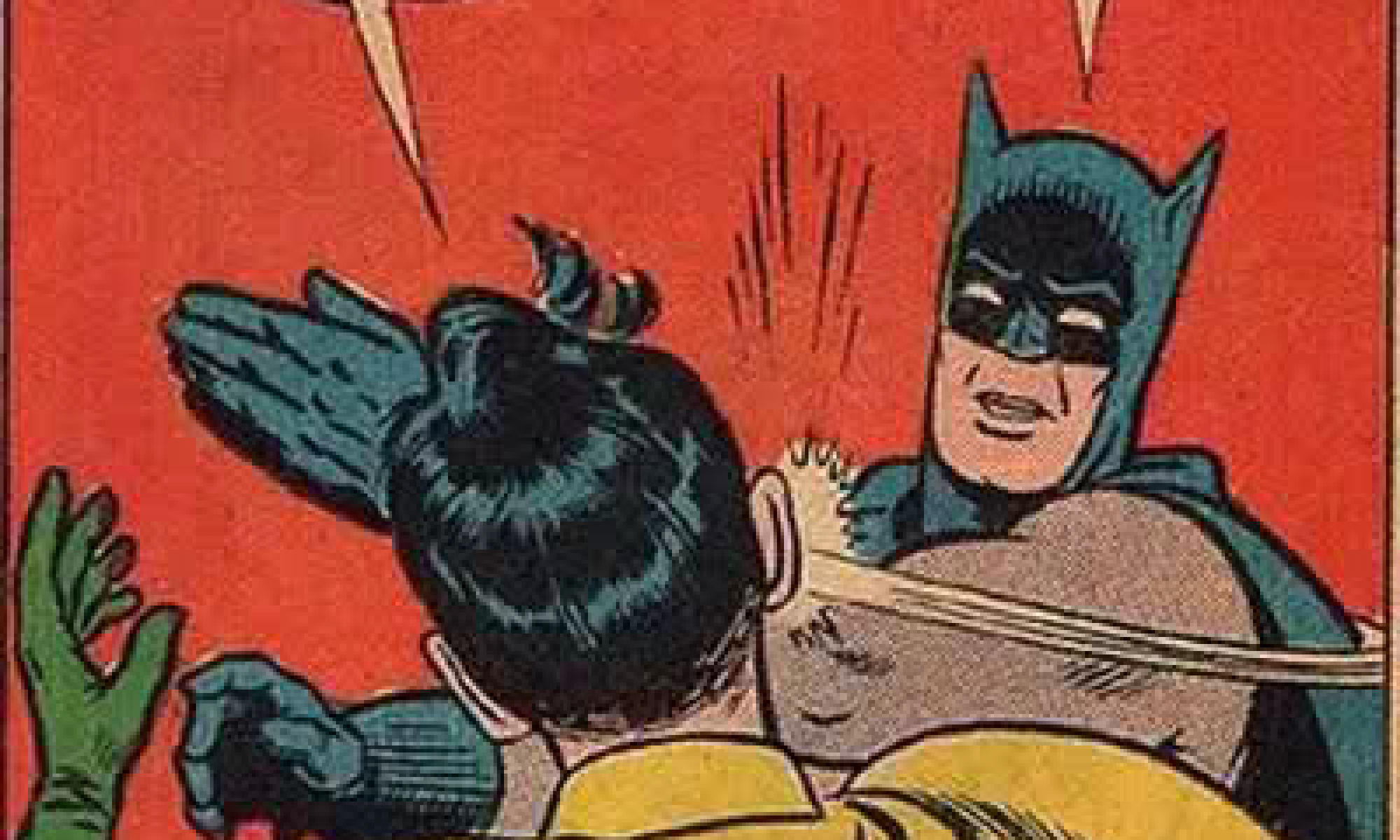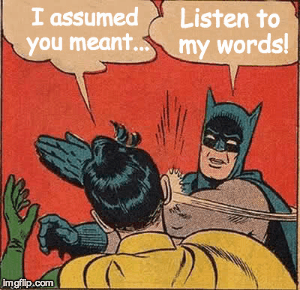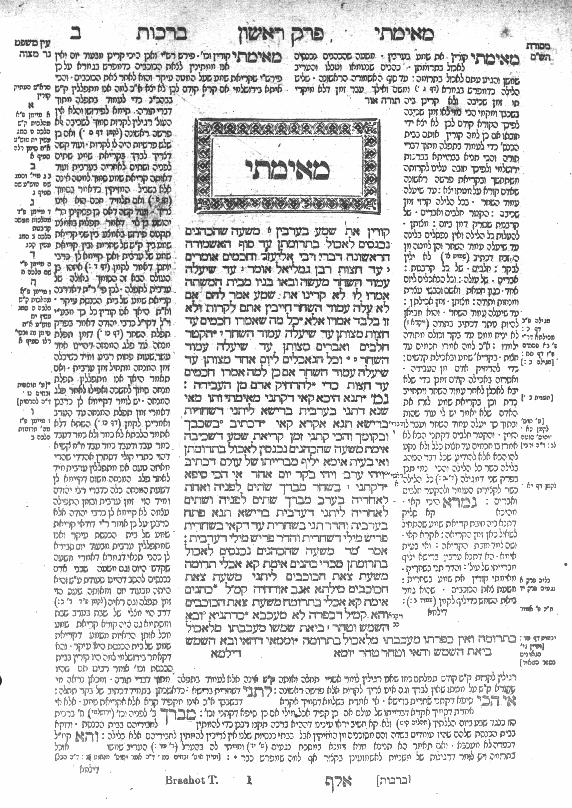When I was working on the first academic presentation of my book-in-progress, A Certain Gesture: Evnine’s Batman Meme Project and Its Parerga!, I struggled a lot with how to justify a work that was (partly) about me. Why should anyone be interested in it? I remember trying to compose in my head an introduction to the talk that would address this problem head on and coming up with two totally different ways of seeing the inclusion of self-writing in my otherwise disunified book. Unable to decide which of these correctly described my case, I ended up using them both, and adding two further introductions for good measure, one after the other, with strict instructions to the audience to forget the previous introductions as they heard each new one. (I highly recommend this practice for general use in philosophy. Why do we demand that our work be unfractured?)
Though I have already published the second of the introductions on this blog, I will put it here again, along with the first, because they speak so directly to my concerns about the sense in which my work is auto-theory. Here is the first:
Many people have a strong desire to speak, or more pertinently, to write about themselves. Not because they wish to hog the limelight, or to be the center of attention. I am not here talking about extroverts, and still less about narcissists. What I am talking about is a strong, almost primordial desire, stemming from our earliest years, for visibility – a desire to be seen and known. To be counted. But a desire to be seen depends on others to see us. One must fight for the attention of, and recognition by, others who may have no interest in seeing or counting one. For those, then, who seek to gratify this desire to be seen through self-writing, various strategies present themselves. Humor is one obvious way to mediate one’s desire for recognition – the child learns not to scream, but to caper! Lyricism is another. More complex strategies are also available. The general can be coaxed from the particular details of a life so that in reading about the other, the reader can also read about herself. And, where the events and idiosyncracies of a person’s life are of a kind that are theorized about in some on-going discursive practice, some variety of theory, the possibility arises of intertwining the expression of the desire for visibility with the pursuit of that discursive practice.
Whatever form the accommodation takes, it is a compromise between the childish desire to be seen and the adult realization that being seen requires an other to do the seeing and that such seeing is not simply there for the taking. The childish desire to show one’s face is met, as it were, with a slap by the reality principle that knows that to be seen, a face must mask itself in some way to make it enticing to the viewer. The upwelling or over-flowing needs of the id must be tamped down by the ego and super-ego.
That is what I see in this image:

An enthusiastic, youthful Robin, as yet unsuccessful in making himself visible to us, is schooled by the older Batman. “No-one is interested in you, Robin,” the image itself seems to say. “Your childish capers are insufficient excuse to speak. Wear a mask!”
And here is the second:
In 1969, the expression “the personal is political” was coined by feminist thinkers to challenge the idea that there is a disjuncture between the personal and the broader structures of power in which individuals are inscribed. If we interpret “political” broadly, so as to include all forms of public, institutional discourse, a special case of the expression would be “the personal is philosophical.” This special case would cover efforts to overcome the disjuncture between the personal and the conventions and norms of philosophy as a discipline. Those norms enjoin authors to keep their own personalities out of their work, enjoin readers to focus only on the ‘ideas’ in the text, ideas that are supposed to be able to circulate without any vital connection to the lives and circumstances of their authors. This valorization of objectivity and impersonality, with its effacement of the people who produce philosophy and the ways their individuality affects the contents of their philosophy, has left philosophy shriveled and immature, deprived of the nourishing life-blood of the real people who make it. What is desperately needed for the reinvigoration of philosophy is the rude and forceful interpellation of our stunted disciplinary norms by the subject, in all her strange specificity and individuality. Auto-theory is one form this interpellation can take: the calling out of a moribund modality of philosophy by the subject, slowly and seductively revealing his own face. But because each subject is singular, unique, and real, the face of her desire, even as it reveals itself, will always retain an element of inscrutability to the other. “Fetish” is the name we give to what is inexplicable, what is surd, in desire.
My project is a work of auto-theory, conducted under the sign of this image

in which the joyful, liberating, fetish-clad warrior, in his idiosyncratic singularity, forces the intrusion of the personal onto the stunted, childish discipline of academic philosophy, trying, with a slap, to bring the blood to its face, trying to rouse it from its valorization, at once perverse and torpid, of the production of philosophy without a visible human face.
So, on the one hand, the personal serves only the primal needs of the writer and has to be made attractive – entertaining or instructive – to allow it to serve those needs and render the writer visible to others. On the other, the personal serves a political goal, of challenging repressive institutional and disciplinary norms.
Regarding the first, I have spoken many times of the ways in which my book is intertwined with my analysis and long-standing struggles over the sense of my own invisibility have been a staple of that analysis. I vividly remember an occasion in about 1984 on which Anthony Gottlieb, in the course of a philosophical discussion we were both part of, casually illustrated some point by considering the proposition that there were n people in the room, taking a moment to work out n, and I realized, with a shock of panic and pleasure that is still reverberating more than 30 years later, that I was one of that number! (Hence “to be counted” in the first introduction.)
It is the spirit of the second introduction, though, that puts the “auto” into auto-theory. It is there because the personal is political. But these posts of mine on auto-theory are asking, in effect, whether the personal is always political. Won’t it depend on the person in question?
In her wonderful paper “What is Trans Philosophy?“, Talia Bettcher says:
We trans people live under constant “theoretical pressure.” Theories float on high, dogging our moves, questioning our motives, limiting or opening our options… We have an intimate relation to theory. It gets stuck to our bodies. One of the reasons trans people exist under theoretical pressure is precisely that we don’t conform to everyday expectations—we’re considered anomalous. But, from the other side of the theory, we “anomalies” want to know what’s going on. For us, our very relation to theory needs to be subject to inquiry. It’s an important question: What is it to philosophize from underneath the theory, on the other side of theory? (4)
For ‘anomalous’ people, people who live under “theoretical pressure,” the inclusion of their lives and lived experience in theoretical work is disruptive of the theories that pressure them.
If this is auto-theory, then my work cannot be rightly classified as such. For all the ways in which I feel not at home in the world, ways that I alluded to in my previous post on this topic, I do not, for the most part, live under theoretical pressure. (Qualification: Jews are a group that have lived, for thousands of years, under enormous theoretical pressure. Bettcher’s lovely phrase “living under theoretical pressure,” in fact, perfectly describes the history of ideology around Jews and Judaism so impressively documented in David Nirenberg‘s Anti-Judaism (2013). But in my particular case, that theoretical pressure has been not all that heavy.) Seeking the status of auto-theory for my work, appropriating its language, is a kind of imposture that is far from innocent. (Curiously, the original occasion for the two introductions was a talk at an academic institution, arranged through the good offices of a friend who works there. At some point, after the thing had been arranged, I learned quite by chance that the talk was to occur under the auspices of MAP – Minorities and Philosophy – a group dedicated to diversifying the profession. I’m not sure why that was but it shows that I got off to an early start in my career as an impostor!)
The only thing that gives me pause over the auto-slap of the previous paragraph is this. Surely every theory of Blackness must imply a theory of Whiteness, any theory of femininity a theory of masculinity, and so for all groups that have been treated as ‘anomalous.’ (Perhaps one could coin a slogan for this: no anomaly without an omaly. Sadly the word “omaly” does not exist in English and the word “omalous,” which does, has a purely mathematical meaning.) So in some sense, we all live in intimate relation to theory, it’s just that some of us don’t know it. (This, of course, is what feminist and critical race theorists have been telling us for decades.) Perhaps by appropriating the language of auto-theory, I can work to make myself (and others like me) feel more under theoretical pressure. (Only, I’m not entirely clear as to whether that is something I’m doing in my work, so I won’t stop slapping just yet.)
Finally, there is another sense of auto-theory for which the personal is political regardless of the identity of the person in question. This is a weaker, formal sense in which local features of the disciplinary landscape are challenged by any introduction of the personal into theoretical contexts. But this post has already gone on too long, so the examination of that must await a future occasion.
Check out my first two posts on auto-theory: Can it be done by the privileged? and Bodies that are (not) at home.










